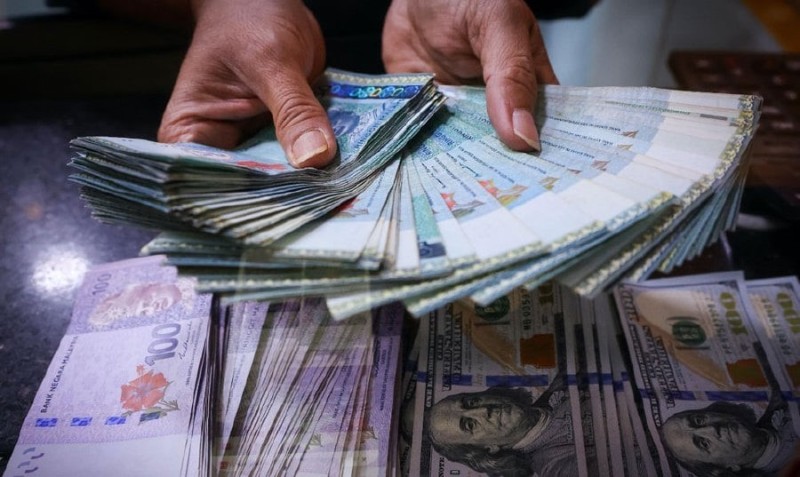
KUALA LUMPUR: Malaysia should continue making good strides in its currency and financial markets, fuelled by robust economy and external factors.
The ringgit had strengthened 11.4 per cent against the US dollar as of Sept 30, mainly driven by external factors, according to Bank Negara Malaysia.
"Positive economic prospects and domestic structural reforms, complemented by ongoing initiatives to encourage foreign exchange flows, will continue to support the ringgit," the central bank said today.
In the financial markets, the country's strong net foreign inflows continued in August at RM11.5 billion compared with RM9.1 billion in July, said MARC Ratings.
This brings the year-to-date (YTD) total to RM20.8 billion, contrasting with the muted inflows seen in the first half of 2024 (1H24).
"This strong performance is expected to persist amid global monetary easing. As at Sept 25, the ringgit appreciated by 5.1 per cent YTD, positioning itself as Asia's top-performing currency, bolstered by the surge in foreign inflows.
"This influx has buoyed the local bond market, with Malaysian Government Securities sustaining their rally throughout September," the firm said.
MARC said following the US Federal Reserve's recent first rate cut since 2020 at 50 basis points (bps) - larger than the typical 25 bps - the broad bond markets rallied on expectations of further US rate cuts.
"Yields continued to decline in September, bull-steepening and pulling the yield curve out of inversion, a trend observed in other bond markets such as in the UK gilts."
The US rate cut, the firm said, came in response to deteriorating employment data, while inflation appears to have peaked, with the personal consumption expenditures price index remaining at 2.5 per cent in August (July: 2.5 per cent).
"Should this trend continue, further US rate cuts are expected, which would maintain the recent strength of the ringgit," MARC said.
Bank Negara said domestic financial market conditions remained orderly despite heightened volatility in global financial markets in the second and third quarters of 2024.
The shift in investor expectations around major central banks' monetary policy decisions contributed to the volatility in financial markets.
It added that business activities improved in 1H24, supported by the recovery in exports and stronger domestic demand.
Despite the robust economic landscape, some business sectors continued to face challenges.
Bank Negara said this arose from continuing cost pressures and slower recovery in consumer demand in some segments for non-essential product.
It added that the credit quality of business loans remained sound, with the impairment ratio stable at 2.6 per cent of business loans.
The share of small and medium enterprises (SMEs) with delinquent loans has also declined.
"Consistent with this, the share of SMEs undergoing repayment assistance programmes trended lower to 4.7 per cent of total SME loans (or 0.8 per cent of total loans from the banking system and development financial institutions)," it said.
Bank Negara expects business resilience to improve further in 2H24 in line with the projected sustained expansion in economic activity.
Input costs are expected to ease amid lower commodity prices and the appreciating ringgit.
It added that household resilience continued to be supported by favourable economic and labour market conditions.
The ratio of household debt to GDP has remained broadly unchanged at 83.8 per cent as household debt grew in line with the pace of economic activity.
Household borrowings that may be at higher risk of default decreased to 4.4 per cent of total household loans, from 4.8 per cent in December last year.
"Bank Negara continues to raise standards expected of financial institutions in response to new and emerging threats. These include introducing enhanced expectations on managing risks posed by third-party service providers," said its deputy governor Jessica Chew.
As of end-June, the banking system's aggregate total capital ratio stood at 18.4 per cent, with capital buffers of RM136.1 billion in excess of the regulatory minimum.
Similarly, the insurance and takaful sectors remained resilient, with an aggregate capital adequacy ratio of 227 per cent and excess capital buffers of RM37.4 billion
Source: https://www.nst.com.my/business/economy/2024/10/1114645/malaysias-currency-and-markets-strengthened-robust-economy

